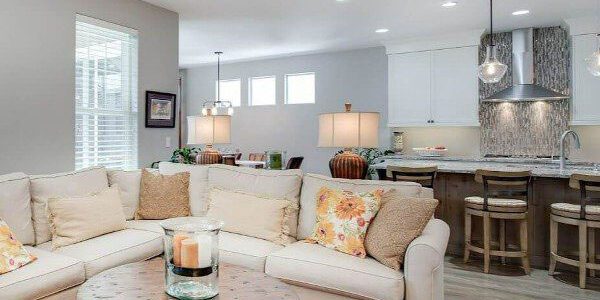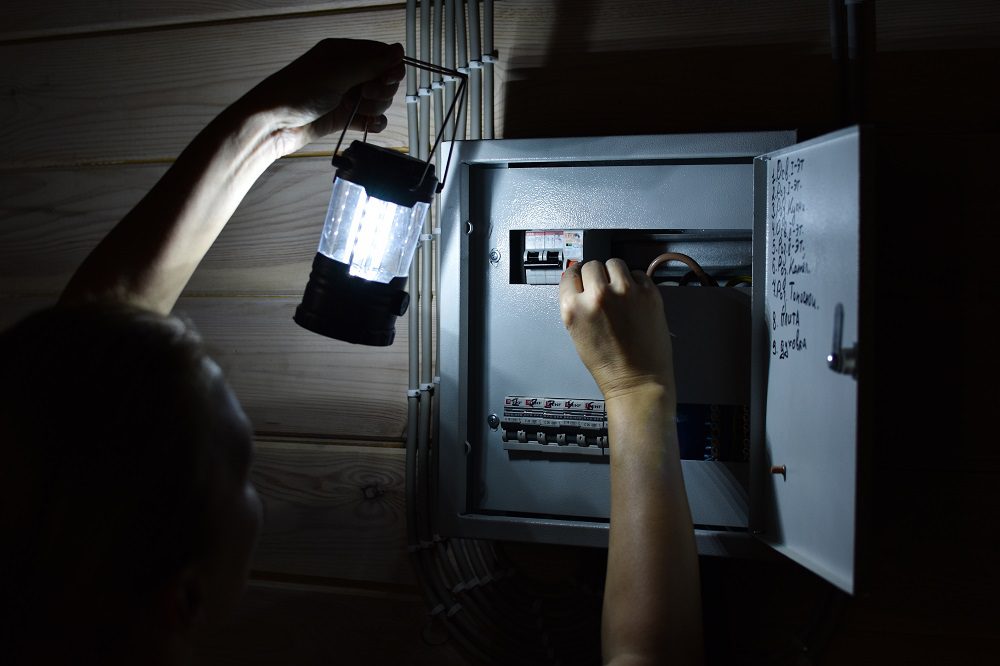
Common Wiring Problems Charlotte Electricians Fix Every Week
Home wiring ages quietly. Then one day a breaker trips, lights flicker, or an outlet smells hot. In Charlotte, these issues tend to cluster around the same patterns: older homes from the 60s through the 90s, heavy summer HVAC loads, and DIY renovations that left surprises in the walls. This guide explains the wiring problems Ewing Electric Co. sees week after week across South End, Plaza Midwood, Dilworth, Ballantyne, University City, NoDa, and surrounding neighborhoods. It also explains what fixes stand up to code and what can wait. For quick help with electrical wiring Charlotte NC homeowners can rely on, local expertise matters.
Why these problems show up in Charlotte
Heat and humidity stress connections. Frequent storms bring surges. Many homes near Uptown carry legacy aluminum branch circuits or multi-wire setups with shared neutrals. Fast growth led to quick flips, where junctions were buried and grounds were ignored. Add modern loads like EV chargers, dual-zone HVAC, and induction ranges, and weak points reveal themselves.
Breakers that trip under normal use
A breaker that trips once during a rare event is one thing; weekly trips during basic use mean a circuit is either overloaded, undersized, or has a fault. Ewing Electric Co. often finds kitchens with a single 15-amp circuit feeding the microwave, coffee maker, and toaster. Code calls for dedicated 20-amp small-appliance circuits. In townhomes around SouthPark, AFCI breakers trip due to damaged cords or backstabbed outlets causing arcing.
Fixes usually involve correcting the load distribution, installing additional 20-amp circuits to code, and replacing backstabbed terminations with proper side-screw or WAGO lever connectors. An AFCI that trips intermittently may be doing its job; it is worth testing the circuit with the loads unplugged, then adding them back to isolate the culprit.
Flickering lights that are not the bulb
Flicker that occurs across several fixtures often points to a loose neutral or an overloaded shared circuit. In older bungalows in Elizabeth and Wesley Heights, Ewing Electric Co. finds wirenuts that were never twisted, or neutrals tied too loosely in the panel. A loose neutral can cause bright-dim cycling when big loads start, like a heat pump or dryer.
The remedy is a torque-verified connection at every neutral bar and splice, and separation of neutrals and grounds if the panel is a subpanel. For recessed lighting on dimmers, mismatched LED drivers and dimmer models cause strobing; swapping to compatible dimmers solves it.
Warm or discolored outlets and switches
Heat at a device faceplate is a warning sign. Common causes include loose terminations, backstab connections fatigued over time, or an undersized device feeding downstream loads. In condos around NoDa, it is common to find one receptacle feeding a string of ten. Each push-in connection adds resistance and heat.
An electrician should inspect the run, re-terminate with the side screws or approved connectors, and, if needed, split the run across two circuits. If a receptacle shows burn marks or smells like hot plastic, it should be replaced immediately and the wiring checked for insulation damage.
Aluminum branch-circuit wiring from the late 1960s–1970s
Some Charlotte neighborhoods include homes wired with aluminum for 15- and 20-amp circuits. Aluminum expands and contracts more than copper, which relaxes connections and can lead to arcing. Ewing Electric Co. sees this often in older ranches near Mint Hill and Matthews.

There are safe repair options. Whole-home copper rewiring is the gold standard, but it is not always necessary. Listed COPALUM crimp or AlumiConn connectors at every device mitigate risk by creating stable aluminum-to-copper transitions. Using CO/ALR-rated devices alone is not a complete fix; proper splicing methods and antioxidant compound are part of a durable repair. An evaluation will identify where aluminum exists, how it is terminated, and the best plan for budget and safety.
Ungrounded outlets in three-prong disguise
Two-wire circuits often get “upgraded” with three-prong receptacles without adding a ground. That leaves electronics at risk and can create false protection. Testers in Myers Park and Chantilly frequently reveal open grounds behind brand-new plates.


Code-compliant options include running a new grounded circuit, adding a GFCI receptacle at the first outlet in the run and labeling “No Equipment Ground,” or installing a GFCI breaker. For home offices and media rooms, a new grounded home run is the cleanest solution.
GFCIs and AFCIs that constantly trip
Nuisance trips are common in garages and kitchens near Lake Wylie and Steele Creek, especially with older appliances that leak a small current by design. Outdoor GFCIs that trip after rainfall often suffer from water intrusion at in-use covers or poorly sealed boxes.
A pro will test the downstream circuit, separate loads, replace water-damaged devices, and verify correct line/load connections. In bedrooms and living areas, combining AFCI and GFCI protection may be code-required; choosing breaker-based dual-function protection often provides better performance and fewer callbacks than stacking devices.
Spliced wires outside of junction boxes
During remodels, it is tempting to join wires and drywall over them. Ewing Electric Co. uncovers this often in attic knee walls and behind vanities in South End loft conversions. Exposed splices are a fire hazard and a code violation.
Each splice must be in an accessible, covered box with the correct cubic inches for conductor count. Repairs involve finding the splice, installing a listed box, securing cable clamps, and labeling as needed. If access is not feasible, running a new home run may be faster than opening multiple finished surfaces.
Overheated panels and double-lugged breakers
In many Charlotte panels, two conductors share one breaker lug even when the breaker is not rated for it. It seems tidy but loosens over time and overheats. Subpanels in detached garages also often have neutrals and grounds bonded together incorrectly.
A licensed electrician will move shared conductors onto separate breakers, install listed handle-tied breakers for multi-wire branch circuits, add a subpanel if the main is full, and correct bonding. Infrared scans can reveal hotspots; anything 30–40°F above ambient at a connection deserves attention.
Old cloth-sheathed wiring and brittle insulation
Pre-1960s cloth or rubber insulation becomes brittle and flakes at the slightest bend. In older Dilworth and Wilmore homes, replacing a fixture can crumble the insulation at the box, exposing bare conductors.
Localized repairs can work if the brittle section is short and accessible. Otherwise, a partial rewiring of the affected branch with new NM-B or conduit is safer. Expect to add arc-fault protection where new wiring connects to old, and plan for gentle fishing methods to preserve plaster.
Frequent bulb burnout and mixed-dimmer issues
If bulbs fail every few months, heat build-up in enclosed fixtures or over-voltage events may be to blame. Charlotte summer surges and generator backfeeds from the neighborhood can be a factor. Another common scenario is a triac dimmer paired with non-dimmable LEDs, which shortens driver life.
Matching dimmers to LED specs and using high-quality lamps with driver headroom solves most cases. For over-voltage complaints, Ewing Electric Co. installs whole-home surge protection and checks for loose neutrals at the service.
DIY additions that lack permits
Unpermitted basement kitchens and garage apartments often show creative wiring: extension cords behind drywall, “vampire” taps, or Romex run outdoors without conduit. These shortcuts pass the eye test until a breaker trips or a tenant gets a shock.
A correction plan brings circuits up to code with proper gauge, GFCI/AFCI protection, and dedicated appliance circuits. It is common to add a small subpanel to serve an accessory unit and separate loads cleanly.
What to do before calling an electrician
- Note where and when the issue occurs, including which appliances run at the time.
- Take a clear photo of the electrical panel with the door open.
- Check if the affected outlet or bathroom/kitchen circuit is on a GFCI and try a simple reset.
- Smell for hot plastic and, if present, stop using that device or circuit.
- If water is involved, shut off power to the area at the breaker.
These steps save time on the first visit and help narrow the fault.
Safety and code updates that matter locally
Charlotte-Mecklenburg inspections enforce current NEC cycles, with local emphasis on GFCI in garages and exteriors, AFCI in habitable rooms, tamper-resistant receptacles, and correct bonding for pool and spa circuits. EV charging is growing fast in Ballantyne and Northlake; 240-volt circuits need load calculations and often a panel upgrade. Heat pump water heaters and dual-fuel systems add significant starting currents, so circuits need proper wire size and breaker types to avoid nuisance trips.
Repair, upgrade, or rewire: making the call
The right path depends on risk, access, and budget. A single warm outlet usually needs a device replacement and re-termination. Widespread aluminum wiring or brittle insulation calls for a system-level approach. If the panel is maxed and the home has future plans for an EV charger or hot tub, a 200-amp service upgrade may be smarter than piecemeal fixes.
Ewing Electric Co. provides clear options with line-item pricing: immediate safety corrections, near-term reliability upgrades, and long-term improvements. That way, homeowners can phase work without living with hazards.
Why choose a local pro for electrical wiring Charlotte NC
Local electricians understand neighborhood wiring eras, how Duke Energy surges show up on sensitive electronics, and what Charlotte inspectors look for. Ewing Electric Co. works daily in South Charlotte, Uptown condos, and Lake Norman properties, and brings that practical context to each job. The team documents every junction, labels panels in plain language, and tests with calibrated instruments so problems stay fixed.
If a breaker keeps tripping, lights flicker, electrical wiring near me or outlets run warm, it is time for a checkup. For dependable help with electrical wiring Charlotte NC residents can book a same-week visit. Call Ewing Electric Co. to schedule an inspection, request a quote, or plan an upgrade that fits the home and the way it is used.
Ewing Electric Co provides dependable residential and commercial electrical services in Charlotte, NC. Family-owned for over 35 years, we handle electrical panel upgrades, EV charger installation, generator installation, whole-home rewiring, and 24/7 emergency repairs. Our licensed electricians deliver code-compliant, energy-efficient solutions with honest pricing and careful workmanship. From quick home fixes to full commercial installations, we’re known for reliable service done right the first time. Proudly serving Charlotte, Matthews, Mint Hill, and nearby communities. Ewing Electric Co
7316 Wallace Rd STE D Phone: (704) 804-3320 Website:
https://ewingelectricco.com/ |
Electric Company in Charlotte
Social:
Facebook |
Instagram |
Twitter |
LinkedIn |
Yelp |
Angi |
BBB
Map: View on Google Maps
Charlotte,
NC
28212,
USA